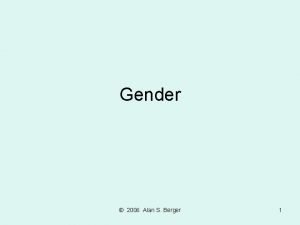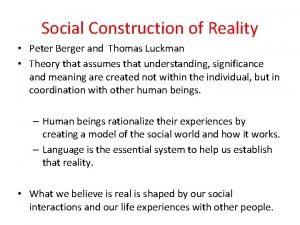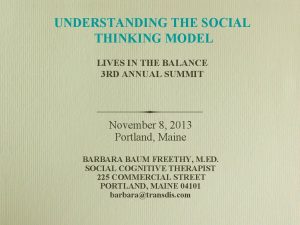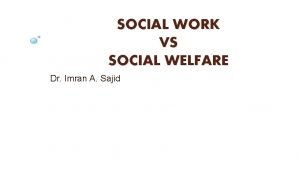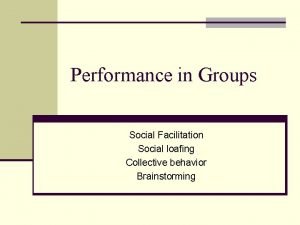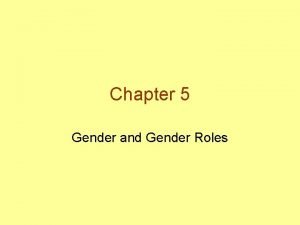Social Construction of Gender 1 What is Gender
















- Slides: 16

Social Construction of Gender 1

What is Gender h Ways people perform what society has determined feminine and masculine behaviors h While sex is biological – based on the chromosomes and sexual organs – gender is socio-psychological. h The behaviors are learned and internalized 2

Gender Terminology h Gender Assignment: : Gender is usually assigned at birth and h h h determined by our physical body-type to be male or female. Gender Identity: How one feels internally about one’s own gender — i. e. a sense of being male, female, genderqueer, etc— is gender identity. Gender Expression: The ways that one may present themselves to the world (as masculine, feminine, both, neither, etc. ) express gender via dress, behavior, etc. Cisgender or “Cis”: A person whose behavior or identity matches the gender assigned at birth. Gender Binary: The social construction that there are two, and only two, “natural” and “normal” genders which are assigned at birth. Transgender: Anyone whose behavior or identity falls outside of stereotypical expectations for their gender; a person who transgresses traditional gender roles and stereotypes. Transphobia: Discrimination against transgender people 3

Play 4

Walk like a man, sit like a lady 5

Gendered Clothing 6

Shoes 7

Movies 8

Gendered professions 9

Can you “do gender”? Men Women Men Women 10

Gender is a Social Institution h Different cultures and historic epochs have different markers for gender, e. g, color, dresses. h Gender roles and expectations are changing with times, e. g, child care, military h Some societies have more than 2 genders: berdaches, hijras, xaniths - males who behave like women. h Transgender people carefully construct their gender by changing their way of dressing, talking, and behaving 11

Gender Bending h Transgender people pass easily from one gender to another h Women in positions of power are treated like men, Queen Elizabeth in Saudi Arabia h Lower class women who run shops in Egypt dress and behave like men h Actors and actresses play characters of different genders h Paradoxically, bending gender rules does not erode but preserves gender boundaries 12

Why do we “do gender”? 13

Why do we “do gender”? h Social organizing principle that yields predictable division of labor h Develop conducts and codes and transmit them to future generations h Makes it easier to understand interpret behaviors h Social, cultural, religious pressure and the cost of deviation encourage conformity h Political power, control of scarce resources, and if necessary violence maintain the gender differences 14

Gender Ranking h Rank genders by prestige and power and construct them to be unequal. h Even when men and women do the same thing, it is perceived as different. Women are paid 80% of men. h Gender discrimination -- discrimination based on sex or gender -- is illegal, but requires showing intent. h Gender bending is both necessary and possible because of the socially constructed status of gender h In the US transsexuals who change to women earn less. Those who change to men earn more. 15

Gender-specific Toys 16
 N-gendrer
N-gendrer Strategic gender needs and practical gender needs
Strategic gender needs and practical gender needs Social thinking adalah
Social thinking adalah Social thinking social influence social relations
Social thinking social influence social relations Gender stratification
Gender stratification Are gender roles a social construct
Are gender roles a social construct Social construction of childhood
Social construction of childhood The social construction of reality summary
The social construction of reality summary Social construction of technology bicycle example
Social construction of technology bicycle example Social construction of childhood
Social construction of childhood Social construction of technology
Social construction of technology Double interview social thinking
Double interview social thinking Social welfare vs social work
Social welfare vs social work Social action vs social interaction
Social action vs social interaction Principles of social action in social work
Principles of social action in social work Social facilitation
Social facilitation Reciprocal model in group work
Reciprocal model in group work




